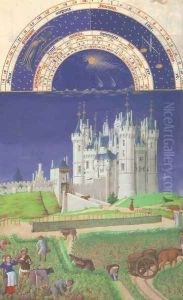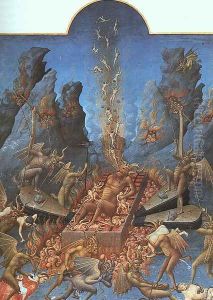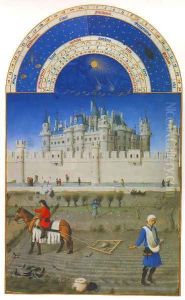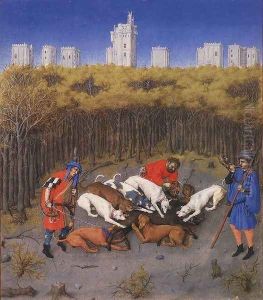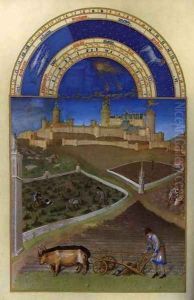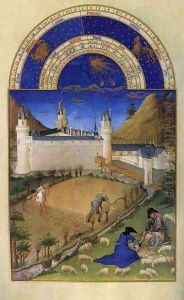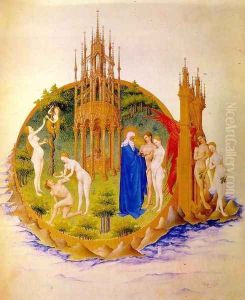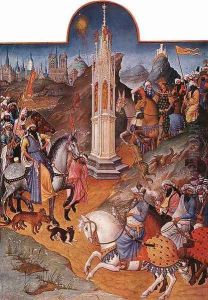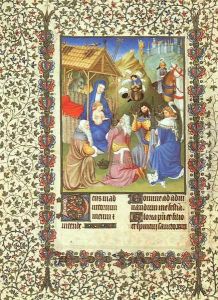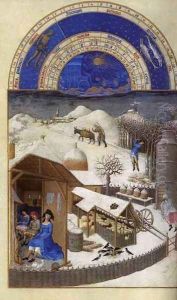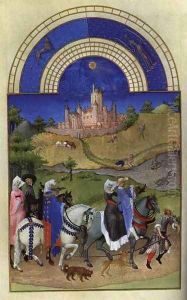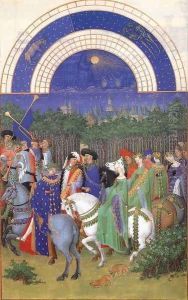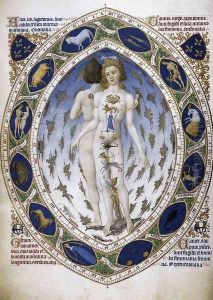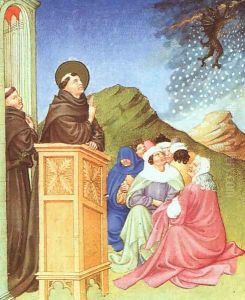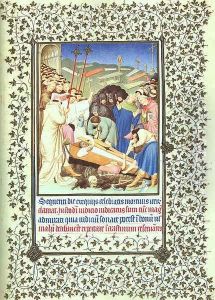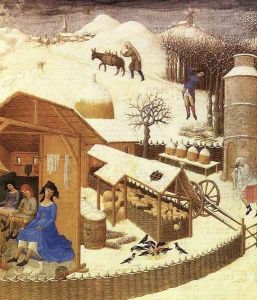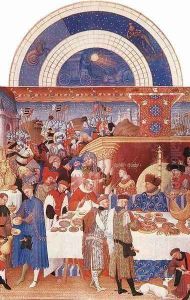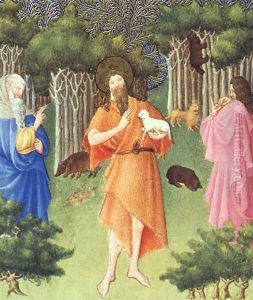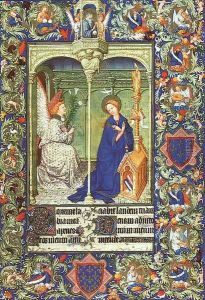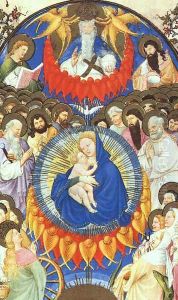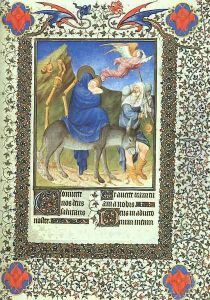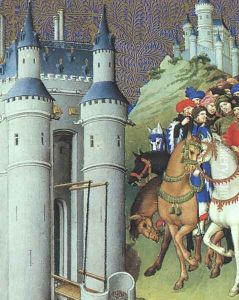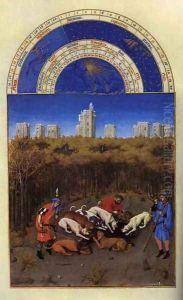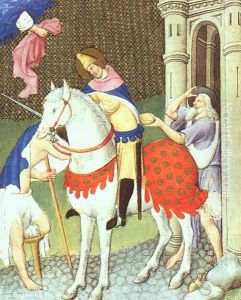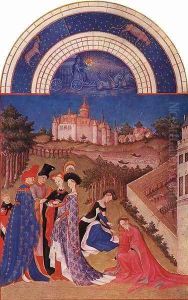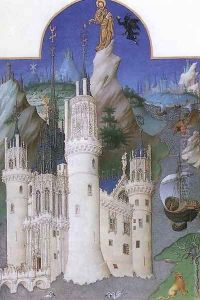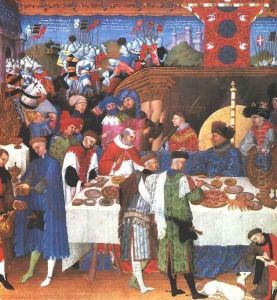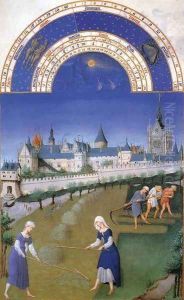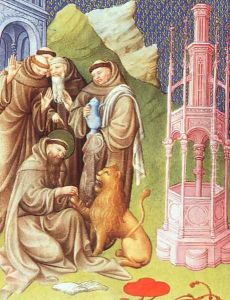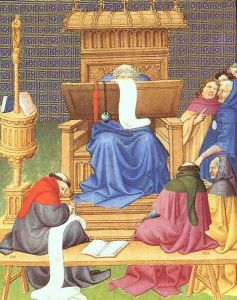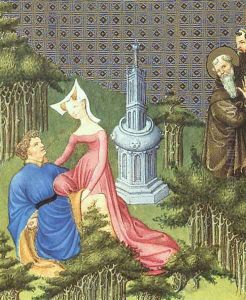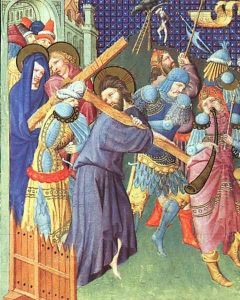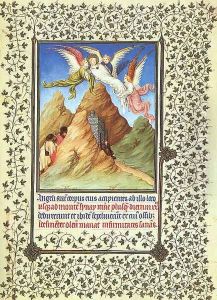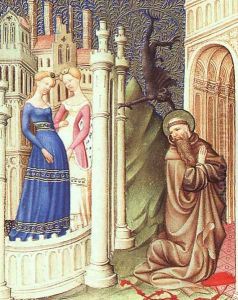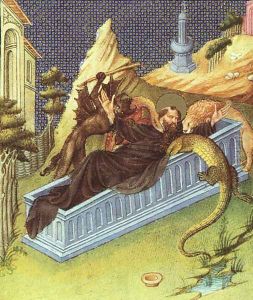Jean Limbourg Paintings
Jean Limbourg, along with his brothers Paul and Herman, were famous Dutch manuscript illuminators in the late 14th and early 15th centuries. Collectively known as the Limbourg brothers, they are best known for their work on the 'Très Riches Heures du Duc de Berry', which is considered one of the masterpieces of book illumination.
Born in Nijmegen, part of the Duchy of Guelders (today in the Netherlands), the Limbourg brothers were active in France and served under the patronage of the Duke of Berry, who was a passionate art collector and a member of the French royal family. Their work is characterized by its intricate detail, use of vivid colors, and incorporation of complex iconography. The brothers were among the first artists to use naturalistic landscapes in the backgrounds of their illuminations, representing a significant shift from the more stylized backgrounds that were common in earlier medieval art.
The 'Très Riches Heures', created between 1412 and 1416, includes a series of monthly calendar illustrations that are especially celebrated for their beauty and for the detailed portrayal of the seasonal activities of the nobility and peasantry. This work features some of the earliest known examples of European landscape painting in a manuscript.
Unfortunately, the Limbourg brothers' careers were cut short due to their premature deaths in 1416, possibly as a result of an epidemic. Despite their brief period of activity, their influence on the art of manuscript illumination was substantial, and their work remains an important reference for the study of art from this period. The 'Très Riches Heures' remains unfinished due to their untimely deaths and was later completed by other artists.
